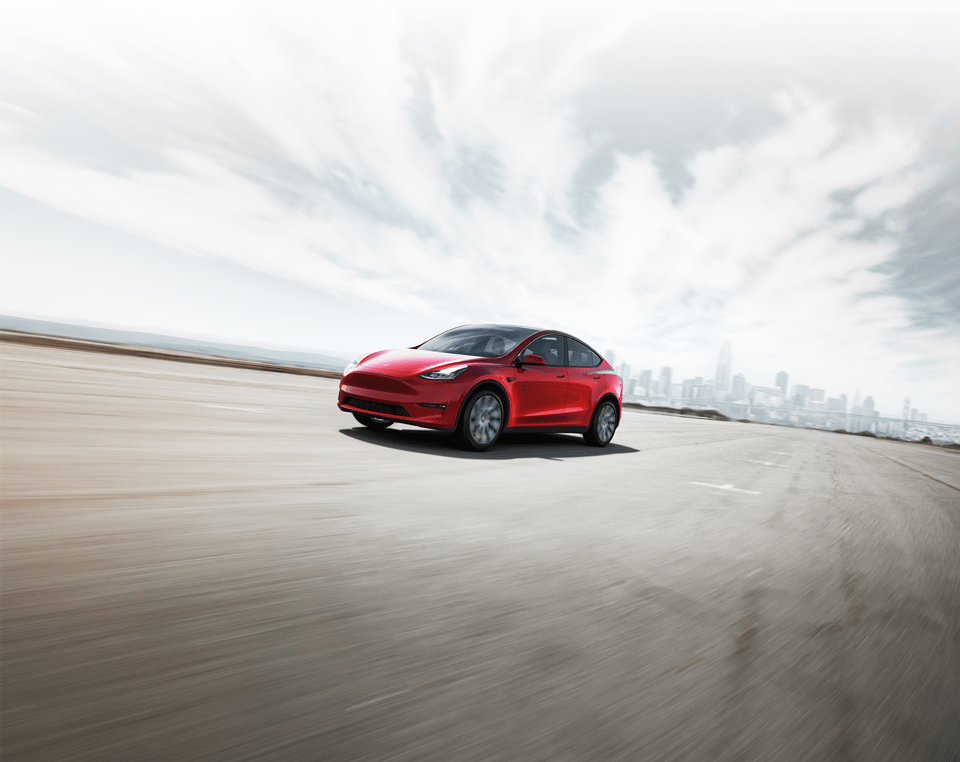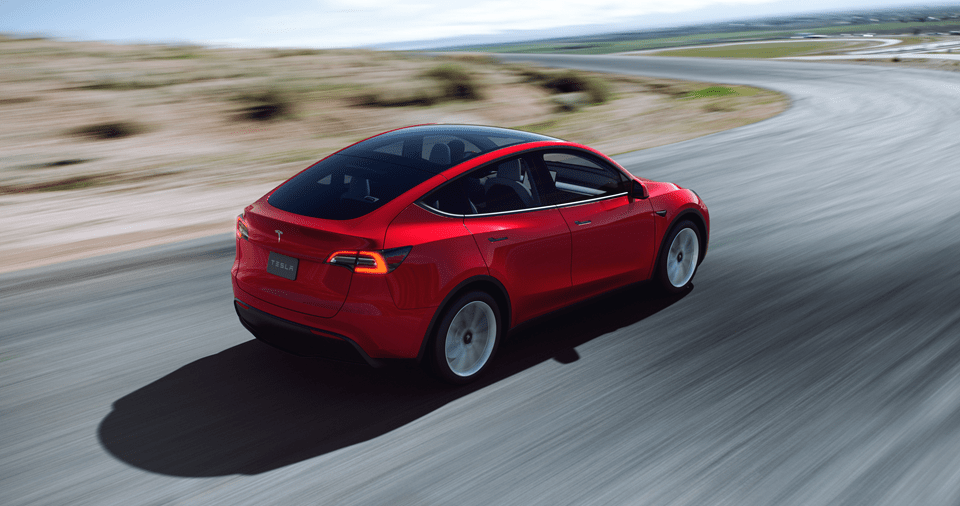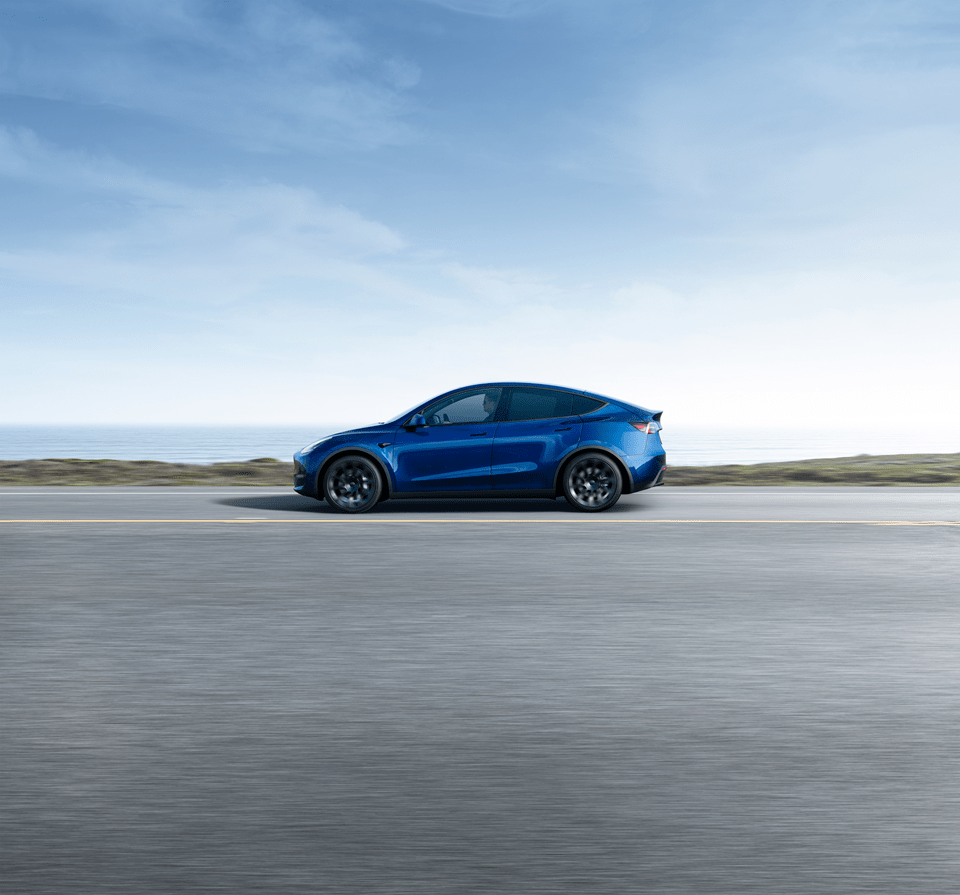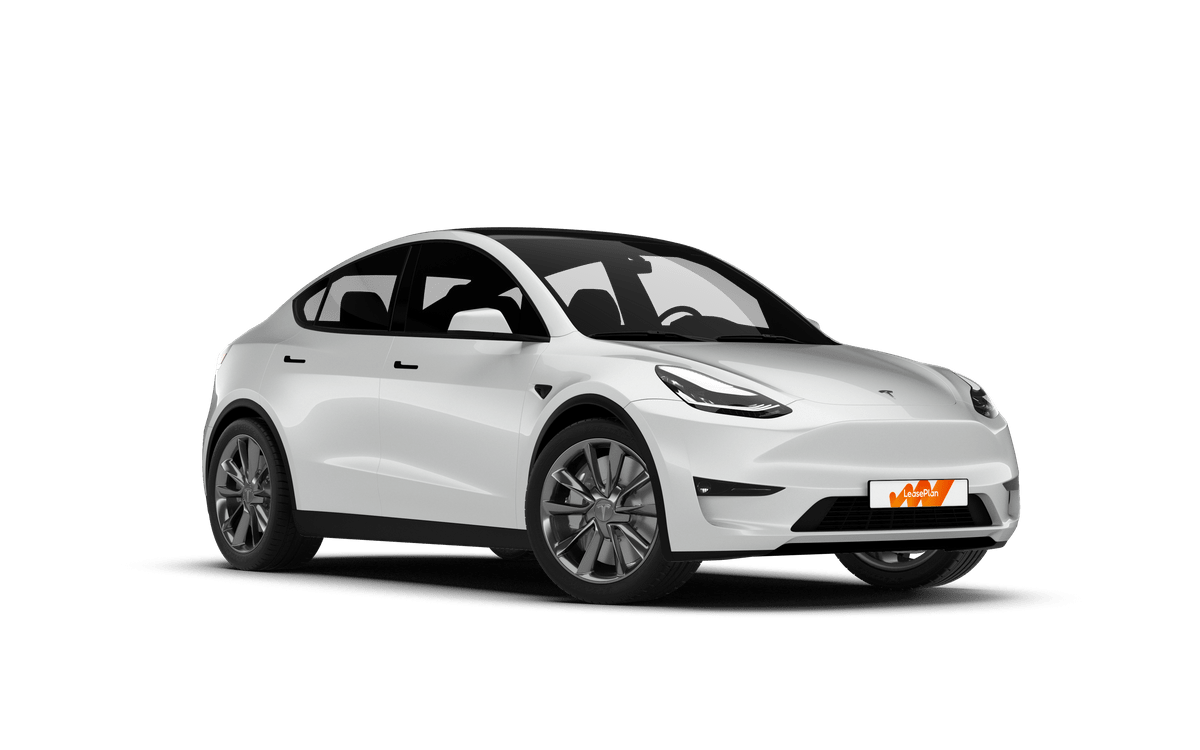
Built for success
Elon Musk believes the Tesla Model Y has the potential to become the most popular car or even the most popular vehicle in the world. The first Model Y variants were delivered to our region back in summer 2021 and in the meantime, the popular EV has become the best-selling car in Belgium. Initially, only the Long Range and Performance were available but at the end of 2022 they were joined by an entry-level model. This version comes with a smaller battery, rear-wheel drive instead of four-wheel drive, and – most importantly – a much more attractive price tag. A fourth version has recently been added to the line-up: the Long Range RWD.
The Model Y takes the chassis, interior and drivetrain of the Model 3 while imitating the chunky SUV design style of the Model X. Withe extra luggage space and the option to include a third row of seats (allowing for seven occupants in total), this vehicle is a fantastic addition to the mid-range segment. Spacious, stylish and efficient. This car has it all.

Designed for comfort
Initially launched as the Long Range AWD and then retooled as the Performance, the Model Y is also available in its low-priced Standard Range guise and the newly added Long Range RWD. Part SUV, part egg-shaped profile, the Model Y stands out thanks to the brand's distinctive nose cone. The spacious, yet minimalist interior is typical Tesla and reminiscent of the Model 3. In contrast to the mid-size variant, however, the Y has enough extra space for two more seats.
The panoramic glass roof fitted as standard enhances the sense of spaciousness. Inside, comfort is the number one focus, with front and rear heated seats, two-zone air conditioning and synthetic leather upholstery. The electronics systems are an essential addition – not to mention typical of the brand – with a 15-inch touchscreen that serves as a dashboard and infotainment centre, a wireless charger for two smartphones, a hi-fi system with 13 loudspeakers and a subwoofer, and multiple US ports. Software updates are received over the air – just like a smartphone.

An interesting basic version
The Model Y falls firmly in the middle of the Tesla range. This electric car is a robust workhorse with driving characteristics worth writing home about. The Performance variant offers fantastic performance with a higher top speed and quicker acceleration, while the Long Range has a greater range and is cheaper. The Model Y Long Range AWD can accelerate from 0 to 100 km/h in a nippy 5.0 seconds, whereas the new Long Range RWD needs just 0.9 seconds more. The Performance goes one better by doing it in an unbelievably quick 3.7 seconds.
Those in the market for something less flashy and more modestly priced may be tempted by the intriguing rear-wheel-drive edition with the standard battery: it's no slouch, going from 0 to 100 km/h in 6.9 seconds, has a range of 455 kilometres on a full battery, and costs a great deal less than the Long Range. Where the Performance and the Long Range have a 75 kWh battery that can be charged at 250 kW, the base version has a smaller 57.5 kWh battery that can be charged at 170 kW via direct current.
Like all Tesla cars, the versatile Model Y has a low centre of gravity and an excellent safety rating. For a surcharge, the Model Y can be fitted with Tesla's Enhanced Autopilot and even Full Self-Driving Capability (as the brand refers to it). Everything else comes as standard, and there is no extra fee for a metallic finish. In short, the Model Y is a smart package containing the best Tesla has to offer.
Tesla Model Y specifications
Tesla Model Y | Tesla Model Y Long Range RWD | Tesla Model Y Long Range AWD | Tesla Model Y Performance | |
|---|---|---|---|---|
SUV/Seats | 5 | 5 | 5 | 5 |
Electric Range (WLTP) | 455 km | 600 km | 533 km | 514 km |
Acceleration (0-100k/h) | 6.9 sec | 5.9 sec | 5.0 sec | 3.7 sec |
Drivetrain | RWD | RWD | AWD | AWD |
Battery capacity | 57,5 kWh | 75.0 kWh | 75,0 kWh | 75.0 kWh |
Fast charge time 20% to 80% | 20 minutes | 19 minutes | 19 minutes | 19 minutes |



